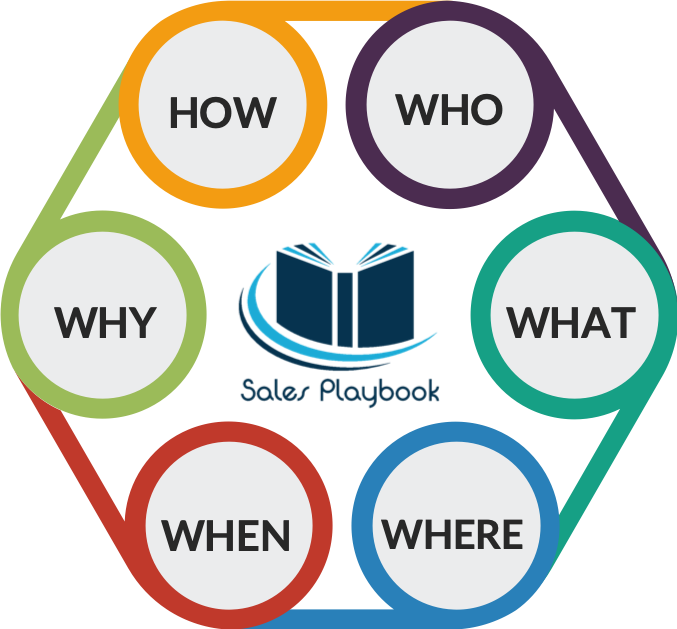
Open-ended questions prompt a more in-depth answer and are incredibly valuable during the sales process. More specifically during the prospecting and discovery steps when it’s key for a sales rep to gather important information around the challenges, motivations and situation of a potential client.
The easy way to describe an open-ended question is to say this is a question that can’t be answered with a single word answer like “yes” or “no”. Instead these questions open up and prolong the duration of a conversation by getting a prospect directly involved in the sales discussion. This is a key skill all sales professionals should master as it not only opens the door to gathering important information, but it builds rapport, trust and credibility as long as you listen, understand and remember what’s said through Active Listening.
Using this type of questioning can help speed up the lead qualification during initial contact, making sure a sales rep and buyer don’t waste time going further into a process that wouldn’t benefit both parties.
It is highly important to add open-ended questions that have been successful for your business into your Sales Playbook.
Open-Ended vs Closed-Ended Questions
Closed-ended questions are narrow in focus and usually answered with a single word or short sentence, which is an automatic response typically picked from a limited multiple choice option. An example would be “Did you like this product?” the response could be “yes” or “no” or “it was OK”. While it may be good to know this answer it doesn’t let you know why or how the customer came to this decision and therefore you would have to ask another one, two or possibly three questions to get a result that could be achieved by asking the question in a different way. Closed-ended questions are a good skill to have in a sales professionals armory and you can read more about this in my article Closed-Ended Question: Clear-Cut Facts.
An open-ended question on the other hand prompts a much more detailed answer, which can lead to a lengthier conversation and more qualitative information to go into your discovery and beyond. If I phrased the question above in a different way by saying “What were the pros or cons of the product you used?”, then the prospect would think about their response instead of giving an automatic one. This in turn opens up a multitude of answers that can be given and encourages the buyer or customer to elaborate on their points. Asking open-ended questions shows a prospect that you are really interested in their response, you are happy to spend the time listening and understanding the answer no matter how long it will take.
The Power of the Five Ws
I have been using the five Ws for years and it’s something I reiterate to the teams I have managed. This is one of the most powerful things to have in your sales armory and they are all open-ended and can’t be answered with a simple “yes” or “no”.

The five Ws is an easy way to remember when you’re considering your open-ended questions during your sales process, but you can make these even more powerful by adding in “how”, so if possible try to remember the five Ws and How.
Examples of Open-Ended Questions
You can find below twenty examples of questions you might be able to use, but in many cases when considering how to phrase these questions you will need to consider your industry, products or services, competitors, etc.
- What challenges are you seeing with X, Y or Z?
- What are the expectations and requirements from this solution?
- What challenges does your process create?
- Who else is involved in the decision making process?
- Why is this a priority for your business?
- When would you like to have this new solution in place?
- What are your primary roadblocks in implementing this purchase?
- Where does this rank in your priorities?
- How can I help you simplify this purchase?
- What is your timeline for achieving these goals?
- What key problems are you trying to solve?
- What other solutions are you currently looking into?
- How many people are involved in the buying process?
- Who is responsible for these metrics?
- What are the key features you want to keep from your current solution?
- What do you see as next action steps?
- How did you get involved?
- Where do you see this solution fitting into your current process?
- What challenges has this created for you in the past?
- When the solution is in place, when would you like to see results?
Keep your question length short, ideally these will be a single sentence. Make your questions as simple as you can. Limit the list, so that you narrow them down to the ones you think or know will lead to direct insight. You don’t want to bombard your prospect with too many questions, if needed you can always schedule another meeting to gather further information. The key things here are NO leading, NO prompting and NO interrupting. Ask the question and then let the prospect/customer give you their answer!
In conclusion…
Write down the open-ended questions you find the most valuable during your conversations, share them with your team and memorise them. Practice asking these questions to each other and predict what responses you could potentially receive. Print them off and put them by your phone as a reminder, and most importantly don’t forget to listen, concentrate, understand and remember the answers your buyers provide!
When reps take the role of a curious student rather than an informed expert, buyers are much more inclined to engage”
Thanks for reading. If you enjoyed this article please like below and share on your social channels.


